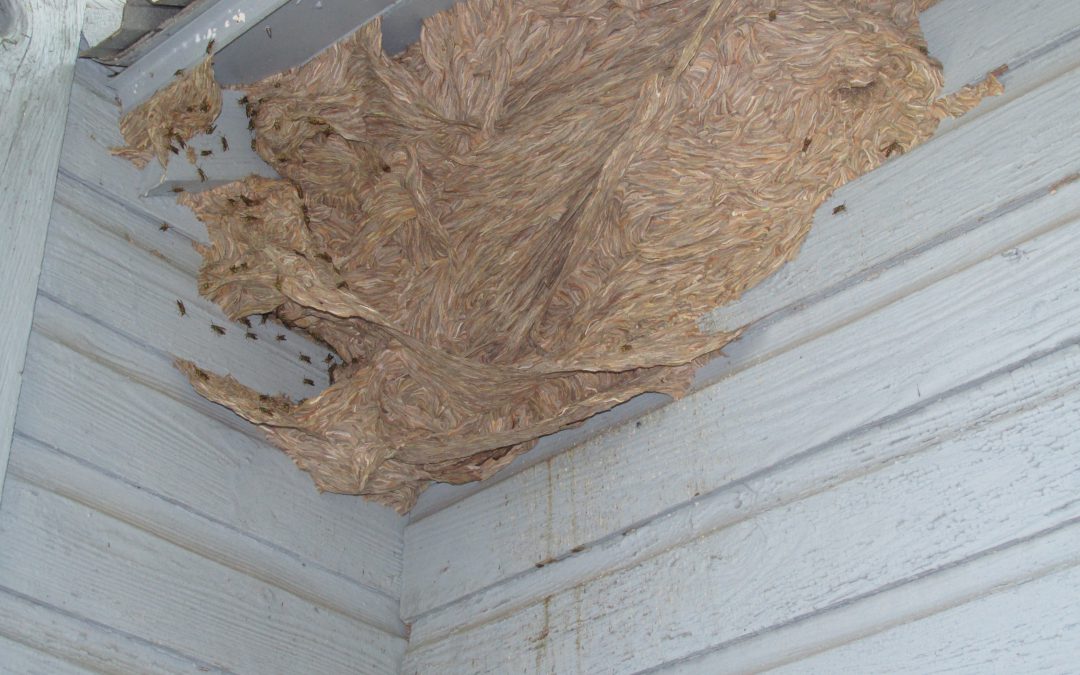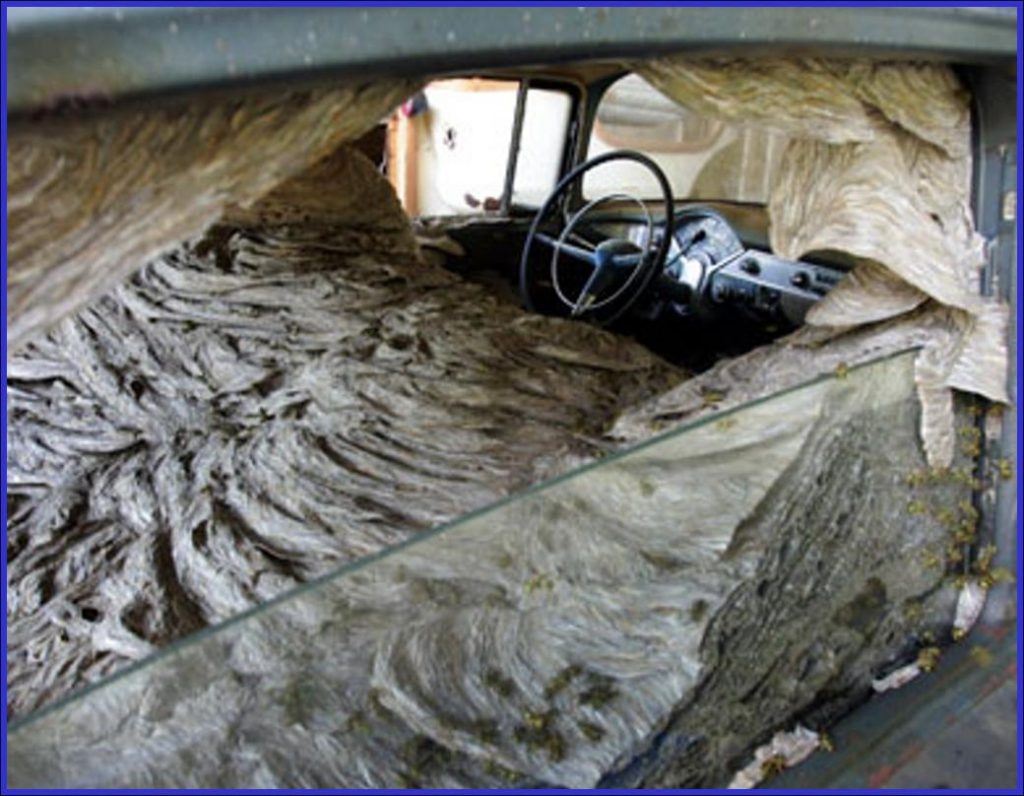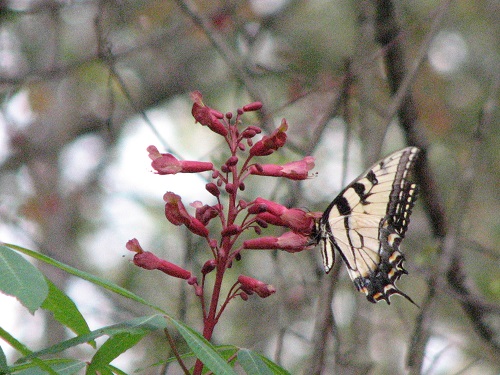
Dynamite Comes in Small Packages
Just about everyone has heard this old expression “dynamite comes in small packages.” It is usually invoked in reference to someone of small stature who punches up in weight class. Well buddy, if you have ever unwittingly disturbed a yellow jacket nest, you know the true meaning behind that saying. I have personally gathered a significant amount of data on this topic over the years, to the point that I have developed a new “LAW OF NATURE” which should be included in every outdoor enthusiast’s training manual. More about this later.
Yellow jackets and baldfaced hornets belong to the insect family Vespidae. While larger than other species of yellow jackets, baldfaced hornets are more closely related to yellow jackets than to other hornets. Most people associate hornets with spherical paper nests usually built in the open and hanging from a tree branch. Baldfaced hornets do this, however, the two other yellow jacket species in Florida typically make their nests below ground, with one to many openings. On occasion though, they will make a nest above ground, as seen in this article’s accompanying photos. Another example of this that I once witnessed was a massive nest in the crown of a cabbage palm. It completely encircled the trunk like a large doughnut about two feet below the fronds and extended upward into the frond bases. Overall, it was about 4 feet high and 3 feet wide.

Being social insects, yellow jackets have a fascinating life history. Multiple queens are produced each fall and fertilized by drones (males) before dispersing on solitary missions to create a new colony next spring. After overwintering in a protected place, she emerges and gets to work. Chewing wood fibers into a pulpy mass, she builds a small paper nest that contains a small comb of cells where she lays eggs for the first generation of workers (all infertile females). Upon hatching, the workers take over the tasks of building, gathering food resources, rearing brood and defending the colony. The queen’s sole duty now is to lay more eggs. In the fall of that first year, new queens typically leave the nest and the old queen dies. Upon her death, the colony’s social structure begins to breakdown and all remaining occupants eventually die out. On rare occasions, some of the young fertile queens may take up housekeeping in the existing nest structure and continue to enlarge it. Usually though, the old nest is totally abandoned to the elements. Now, back to what I have learned from my unfortunate penchant to collect data on yellow jackets.
LOVESTRAND’S LAW OF NATURE: The number of stings you will be dealt upon disturbing a yellow jacket colony, is inversely proportional to the rate at which you put distance between yourself and said colony.
1st COROLLARY TO LOVESTRAND’S LAW OF NATURE: The time between pain of the first sting and the brain’s capacity to activate your flight reflex, plus the wasted time bouncing off trees and climbing over any other persons in your flight path, diminishes in an additive fashion, the rate at which distance between yourself and the colony can be achieved.
2nd COROLLARY TO LOVESTRAND’S LAW OF NATURE: The rate at which you put distance between yourself and a disturbed yellow jacket colony, is also directly proportional to the number of stings you have been dealt during previous interactions with pissed off yellow jackets.
Fortunately, the most stings I have ever received during a single incident was thirteen. It’s funny how numbers like that stick in your head but it really was quite a memorable experience. Did I mention, unlike honeybees, yellow jackets have no barb on their stinger and will cling to you, stinging until they exhaust their venom supply? Perhaps, tucking this tidbit into the recesses of your brain will somehow add an extra shot of adrenaline to your rate of escape and save you a few stings. It works for me.

